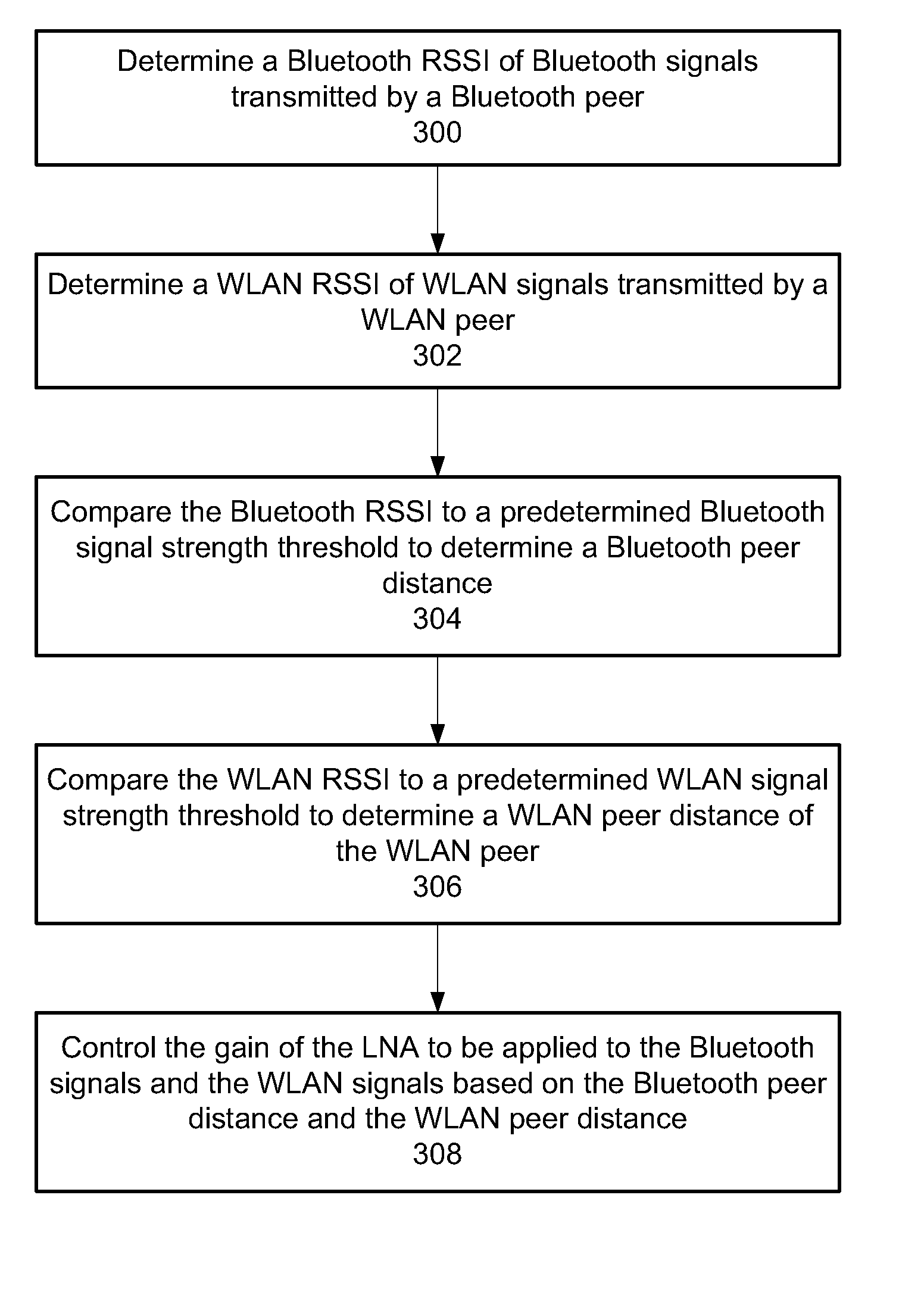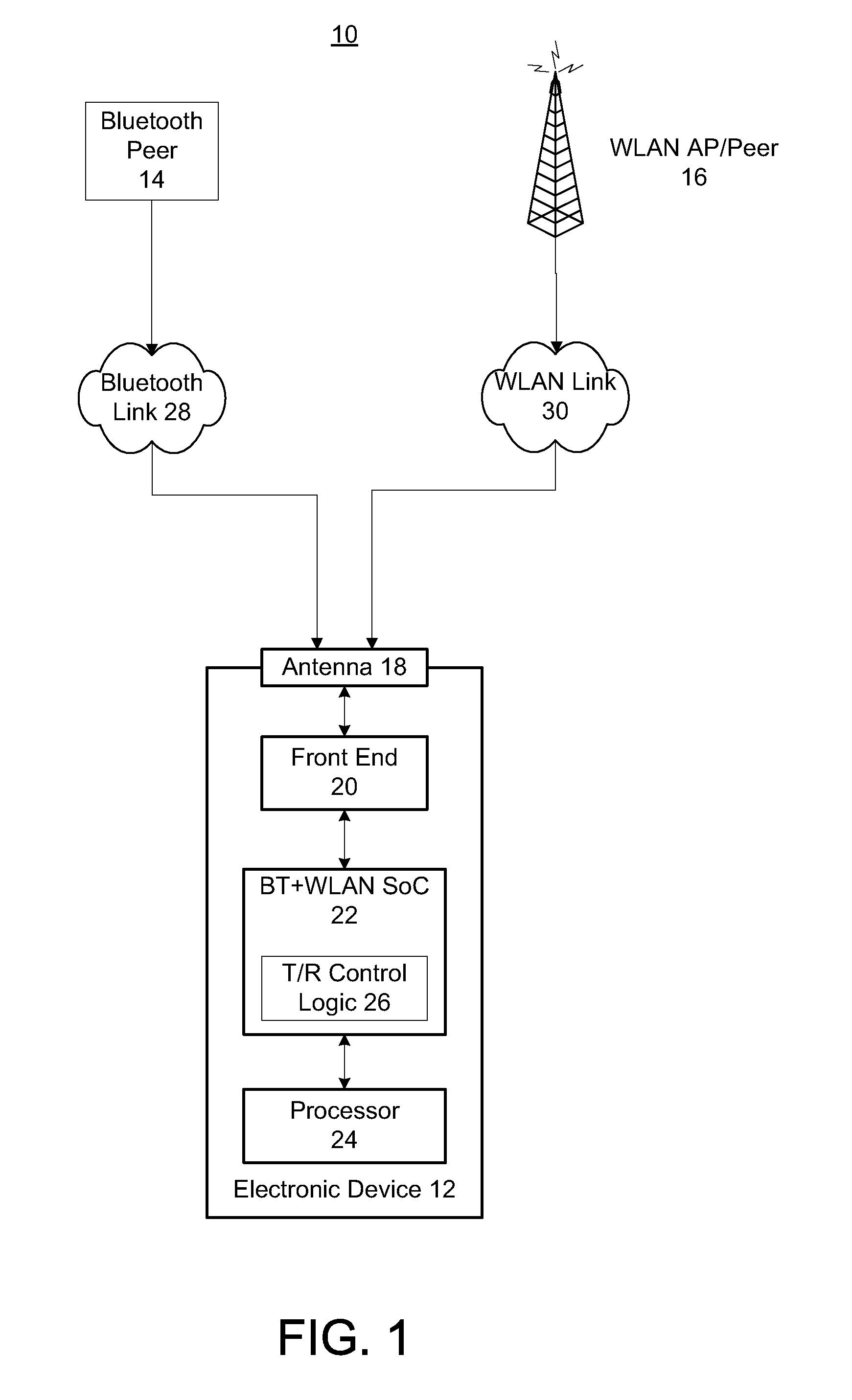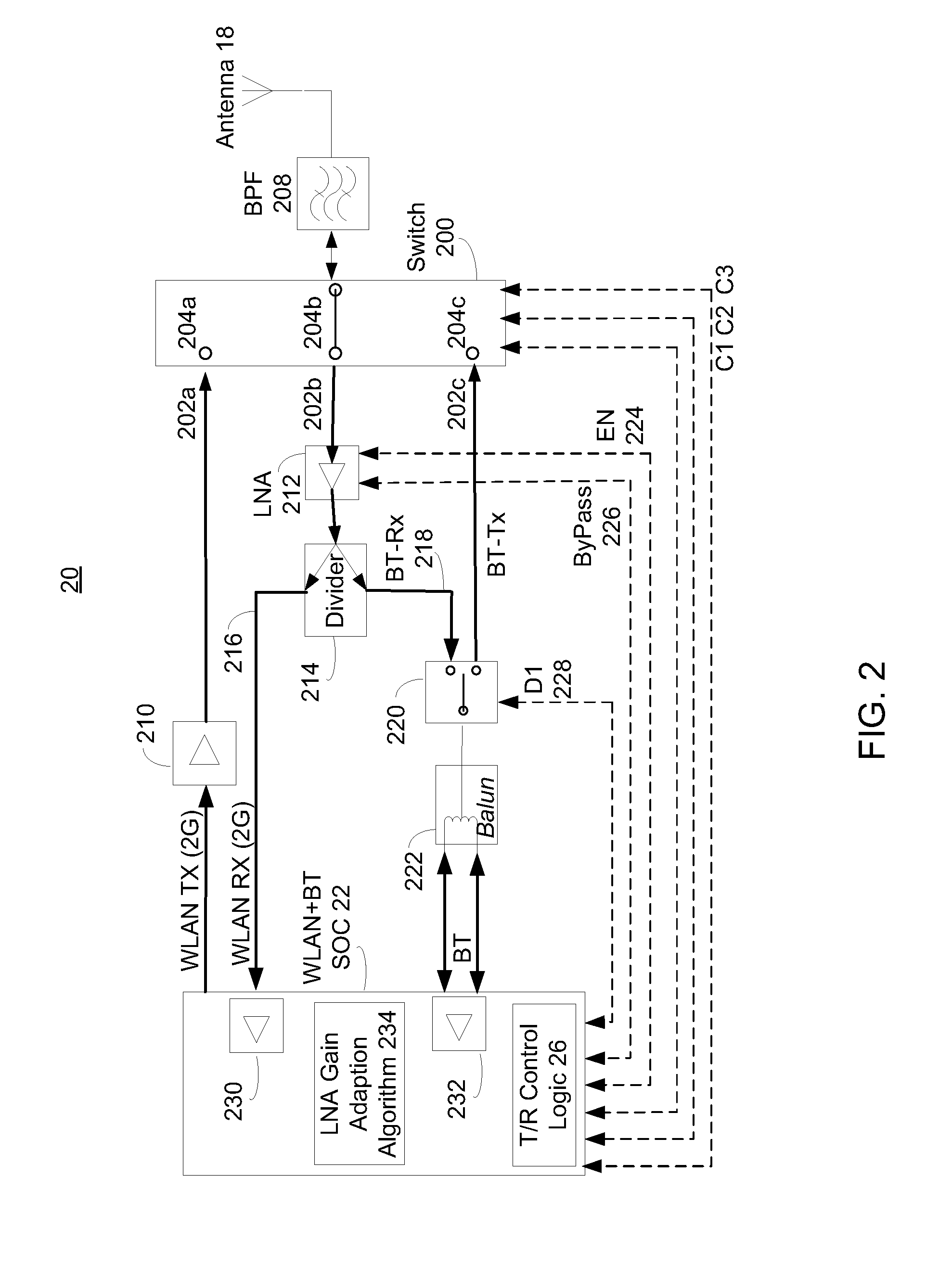Low noise amplifier gain adaption based on a received signal strength indication of bluetooth and wlan signals
a low noise amplifier and signal strength technology, applied in low noise amplifiers, transmission monitoring, wireless communication, etc., can solve problems such as slow data rate, difficult design of integrated circuits (ics), and high noise, and achieve low noise and low noise
- Summary
- Abstract
- Description
- Claims
- Application Information
AI Technical Summary
Benefits of technology
Problems solved by technology
Method used
Image
Examples
Embodiment Construction
[0014]The present invention relates to low noise amplifier (LNA) gain adaption based on a received signal strength indication of Bluetooth and WLAN signals. The following description is presented to enable one of ordinary skill in the art to make and use the invention and is provided in the context of a patent application and its requirements. Various modifications to the embodiments and the generic principles and features described herein can be made. Thus, the present invention is not intended to be limited to the embodiments shown, but is to be accorded the widest scope consistent with the principles and features described herein.
[0015]The present invention is mainly described in terms of particular systems provided in particular implementations. For example, the system is described for use with wireless local area network (WLAN). However, this method and system may operate effectively in other implementations. For example, the systems, devices, and networks usable with the prese...
PUM
 Login to View More
Login to View More Abstract
Description
Claims
Application Information
 Login to View More
Login to View More - R&D
- Intellectual Property
- Life Sciences
- Materials
- Tech Scout
- Unparalleled Data Quality
- Higher Quality Content
- 60% Fewer Hallucinations
Browse by: Latest US Patents, China's latest patents, Technical Efficacy Thesaurus, Application Domain, Technology Topic, Popular Technical Reports.
© 2025 PatSnap. All rights reserved.Legal|Privacy policy|Modern Slavery Act Transparency Statement|Sitemap|About US| Contact US: help@patsnap.com



